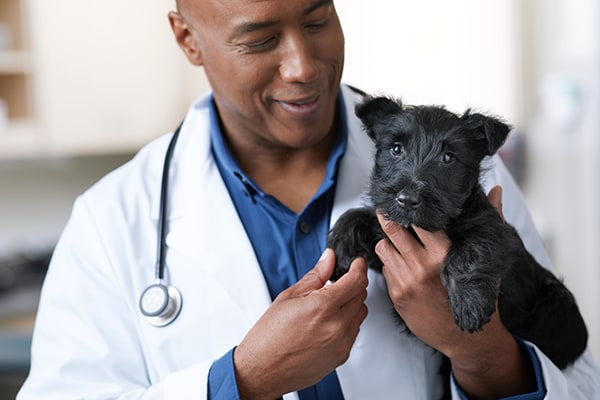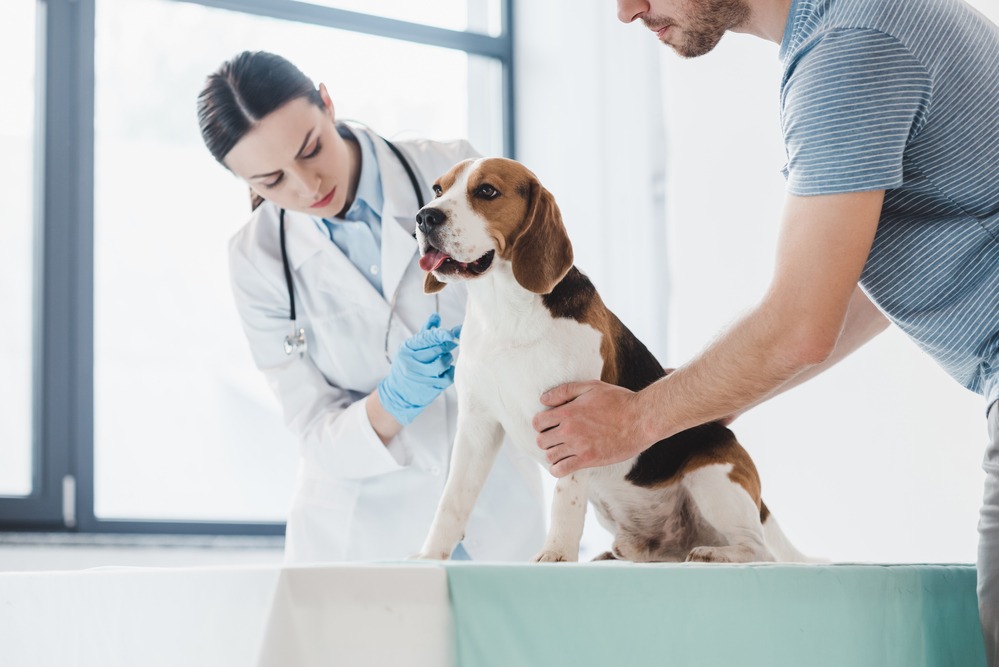Signs Your Pet's Condition Is Serious Enough for an emergency vet
Signs Your Pet's Condition Is Serious Enough for an emergency vet
Blog Article
Everything About Vet Surgical Treatment: Recognizing the Significance of Professional Care for Your Pets
Vet surgical procedure is an essential element of pet dog medical care. It incorporates numerous procedures, from regular elective surgeries to immediate interventions. Recognizing the ins and outs of these surgical procedures can help animal owners make notified choices. The prep work, execution, and healing stages are crucial for ensuring the wellness of animals. With correct understanding, owners can navigate the complexities of vet treatment. What variables should be taken into consideration prior to a family pet undergoes surgical treatment?
Sorts Of Vet Surgeries
When a pet calls for surgical intervention, recognizing the different types of veterinarian surgical procedures can aid pet dog proprietors make notified choices. Veterinary surgical treatments can be broadly categorized into three major kinds: elective, urgent, and emergency surgical procedures. Elective surgical procedures, such as spaying or neutering, are prepared procedures that are not instantly dangerous. Immediate surgical treatments, like those for international body removal, need to be executed soon but are not life-threatening in the moment. Emergency surgical procedures, such as those dealing with extreme trauma or interior blood loss, are important and call for immediate attention.Additionally, surgeries can vary in complexity, ranging from minimally invasive laparoscopic procedures to much more extensive open surgical treatments. Each kind of surgery carries its own risks and recuperation procedures. Comprehending these categories enables pet proprietors to participate in meaningful discussions with veterinarians, leading to much better results for their beloved pet dogs.
Planning for Your Pet dog's Surgical procedure
Getting ready for an animal's surgical treatment involves a thorough list to assure all fundamentals are covered. Efficient interaction with the veterinarian is important for recognizing the procedure and any essential pre-operative actions - animal emergency care bellingham. In addition, having clear post-operative treatment guidelines will certainly assist owners offer the best support for their recovering pet dogs
Pre-Surgery Checklist Essentials
Ensuring a smooth medical experience for a pet needs cautious prep work and focus to information. A pre-surgery checklist is necessary for pet owners to comply with. Confirming the arranged surgical treatment date and time is vital. Owners need to likewise verify that their animal has actually fasted according to the veterinarian's directions, typically for 8-12 hours prior to surgery. Collecting required medical records, including inoculation history, is essential for the veterinarian's testimonial. It is likewise suggested to prepare a comfortable area in the house for the family pet's healing after surgical procedure. Owners should have a plan for transport to and from the veterinary facility, making certain that the family pet is protected and comfy throughout the journey. Complying with these actions can significantly improve the surgical experience.
Interacting With Your Veterinarian

Efficient interaction with the vet is necessary for an effective medical experience for pet dogs. Proprietors need to be prepared to review their animal's case history, including any kind of pre-existing conditions, medications, and allergies. This information assists the veterinarian analyze risks and customize the medical plan accordingly. Furthermore, pet proprietors should ask questions concerning the procedure, anesthesia, and expected outcomes to assure they completely comprehend the process. Clarifying any type of uncertainties can reduce anxiousness for both the pet dog and the owner. It is also essential to interact any type of behavioral adjustments or problems observed in the pet dog leading up to the surgical treatment. Inevitably, clear dialogue cultivates count on and cooperation, ensuring that family pets get the ideal possible treatment throughout their surgical trip.
Post-Operative Treatment Instructions
After going over the operation with the vet, pet proprietors need to concentrate on post-operative care guidelines to promote a smooth recovery for their pet dogs. These instructions usually consist of monitoring the surgical site for indicators of infection, such as inflammation or discharge. Animals might need to be kept one's cool and constrained to stop extreme movement that might disrupt healing. Discomfort administration is important, so proprietors need to follow the veterinarian's guidance on administering medicines. Additionally, dietary constraints may be suggested to prevent stomach trouble. Routine follow-up consultations are very important to ensure correct healing and deal with any kind of issues. By sticking to these post-operative care instructions, pet dog proprietors can substantially add to their animal's recovery and general health.
The Surgical Refine Explained
The surgery for pet dogs encompasses important steps that assure their safety and recuperation. Pre-surgery preparations are vital for minimizing dangers, while post-operative treatment guidelines play a vital duty in promoting recovery. Recognizing these parts helps animal owners browse the medical experience better.
Pre-Surgery Preparations
Before an animal undergoes surgery, numerous important prep work must occur to assure a safe and effective treatment. A thorough veterinary evaluation is essential to analyze the family pet's general health and wellness and identify any possible dangers. This may include blood tests, imaging, or other diagnostics. The vet will additionally go over anesthesia options customized to the pet dog's particular requirements. In addition, pet dog owners are usually instructed to keep food and water for a defined time before surgery to reduce the risk of difficulties during anesthesia. It is essential for proprietors to give a full clinical history, including any type of drugs or allergies, making certain the surgical group has all necessary information. Proper interaction and adherence to pre-surgery guidelines can significantly improve the result of the procedure.
Post-Operative Care Standards
Correct post-operative treatment is important for ensuring a family pet's recuperation adhering to surgery. After the treatment, animals must be monitored very closely for any indicators of problems, such as too much bleeding, swelling, or unusual habits. It is very important to comply with the veterinarian's instructions pertaining to medicines, including discomfort reducers and antibiotics. Pet dogs should be maintained in a peaceful, comfortable atmosphere to minimize anxiety and advertise recovery. Restricting activity is important; short, leashed walks might be necessary, however jumping or running must be stayed clear of. Regular follow-up consultations must be scheduled to assess the recovery procedure. Furthermore, the medical website should be kept clean and completely dry, with any indicators of infection reported to a veterinarian promptly. Abiding by these standards enhances recovery end results.
Anesthetic and Discomfort Management
Reliable anesthetic and pain monitoring are important components of veterinary surgery, making sure that animals remain comfy and safe throughout the procedure. Vets examine each animal's specific demands, thinking about aspects such as age, weight, health status, and the kind of surgical treatment being performed.Anesthesia methods commonly include a mix of pre-anesthetic medicines, induction representatives, and inhalant anesthetics, enabling precise control over the pet's level of awareness. Monitoring during surgery is essential; vets constantly observe essential signs to resolve any potential problems promptly.Pain management methods might include opioids, non-steroidal anti-inflammatory medicines (NSAIDs), and anesthetics, tailored to the pet dog's specific situation. This diverse strategy helps reduce pain and promotes a smoother surgical experience. By prioritizing effective anesthesia and pain management, vet professionals enhance the overall well-being of family pets undertaking surgeries, guaranteeing they obtain the greatest requirement of care.
Post-Operative Care and Recuperation
Complying with surgical procedure, the focus moves to post-operative treatment and healing, which is vital for ensuring an animal's safe return to normal tasks. Throughout this duration, pets require a peaceful, comfortable setting to help healing. Proprietors ought to closely monitor their pets for any type of indications of pain or unusual behavior.Veterinary standards typically consist of certain instructions related to drug administration, wound care, and nutritional changes. It is important to stick to these suggestions to reduce issues and promote healing. Pets may need to be restricted from vigorous activities, such as running or jumping, throughout their healing period (tplo surgery for dogs).Regular follow-up appointments with the veterinarian enable for monitoring of the family pet's progress and timely changes to the care plan. Supplying psychological assistance and friendship can additionally enhance a pet dog's healing experience, aiding to reduce stress and anxiety. On the whole, thorough post-operative treatment plays a considerable duty in achieving a successful recuperation
Acknowledging Problems After Surgical Procedure
Just how can pet proprietors identify issues after surgery? Awareness of specific indicators is crucial for making certain the wellness of pets during healing. Common indicators consist of excessive swelling, soreness, or discharge at the surgical website, which might symbolize infection. In addition, consistent discomfort, suggested by whimpering or hesitation to relocate, ought to trigger instant interest. Modifications in hunger or water consumption can also indicate issues; a decrease in these behaviors may signal discomfort or distress.Moreover, family pet proprietors need to monitor their family pets for any type of uncommon behavior, such as lethargy or difficulty breathing, as these can be indicators of significant concerns. Throwing up or looseness of the bowels following surgical procedure might require immediate vet analysis. Recognizing these problems early can greatly affect a pet's recovery procedure, stressing the value of vigilance and prompt communication with a veterinarian for any concerning symptoms.
The Function of Vet Experts in Surgical Care
Vet specialists play a necessary role in making certain the safety and success of surgical procedures for animals, particularly complying with surgery when keeping an eye on and treatment are paramount. These professionals include veterinarians, vet professionals, and assistance team, every one of whom add specialized skills to the medical process.Before surgery, vets carry out detailed assessments to assess the pet dog's wellness, making certain that any type of hidden conditions are taken care of. During the procedure, the surgical group offers anesthetic, keeps sterile environments, and keeps an eye on crucial indicators, all essential for minimizing risks.Post-operative care is equally significant; vet professionals observe for difficulties, manage discomfort, and overview proprietors on healing methods. Their experience allows them to identify early signs of distress or infection, guaranteeing prompt intervention. Eventually, the collaborative initiatives of vet experts in medical treatment promote a secure atmosphere, promoting the wellness of animals throughout the medical journey.

Often Asked Concerns
Just how Do I Select the Right Vet Cosmetic Surgeon for My Animal?
Selecting the appropriate veterinary cosmetic surgeon entails looking into qualifications, reading reviews, and evaluating the facility's setting. It is important to mirror on the doctor's experience with particular procedures and their interaction style when making a decision.
What Are Typical Misconceptions Regarding Veterinarian Surgeries?
Typical mistaken beliefs regarding veterinarian surgical treatments consist of ideas that they are constantly dangerous, unneeded, or for emergencies. Lots of family pet owners underestimate the benefits of preventive treatments and the skill included in veterinary surgical care.
Exactly How Much Will My Animal's Surgical treatment Price?
The expense of a family pet's surgical procedure can differ substantially based upon factors such as the kind of procedure, the veterinarian's experience, and geographic area (tplo surgery for dogs). Normally, expenditures range from a couple of hundred to a number of thousand dollars

Can My Family Pet Eat Prior To Surgical Treatment?
Before surgery, it is usually encouraged that animals abstain from consuming for a details duration. This fasting assists minimize the threat of difficulties during anesthesia. Owners should consult their vet for specific guidelines customized to their animal's needs.
What if My Pet Dog Has Pre-Existing Health Conditions?
When a family pet has pre-existing wellness problems, read more it's important for the veterinarian to assess these variables before surgical procedure. This analysis guarantees proper preventative measures are taken, decreasing threats and enhancing the family pet's general safety and security throughout the treatment.
Report this page